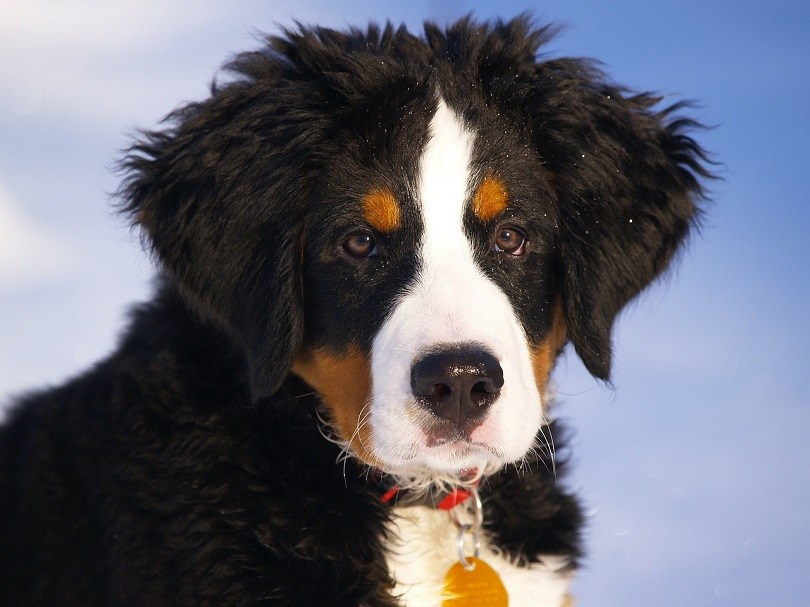Newfoundland vs Saint Bernard: What’s the Difference? (With Images)
Updated on
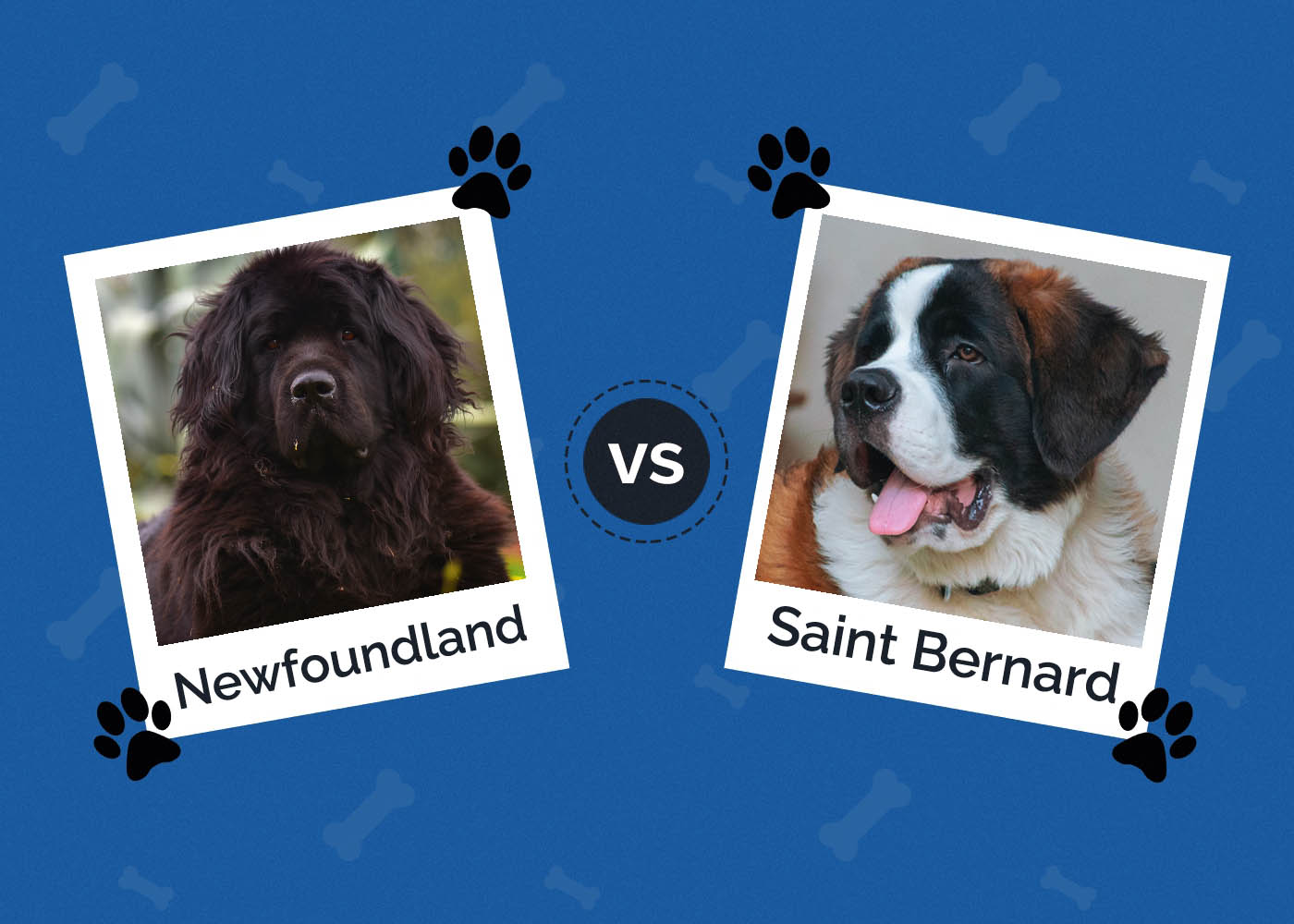
When you think of a giant dog, you likely think of the Newfoundland and the Saint Bernard. They’re incredibly large and quite popular. Plus, they are considered “gentle giants” with sweet and calm personalities.
If you’re considering adopting either of these dogs, you’re likely wondering what the differences are between the two breeds. While they look different on the surface, they’re probably more similar than you first imagined. In this article, we’ll look at the few characteristics that separate the two dogs so that you can choose the best one for your lifestyle.
Visual Differences
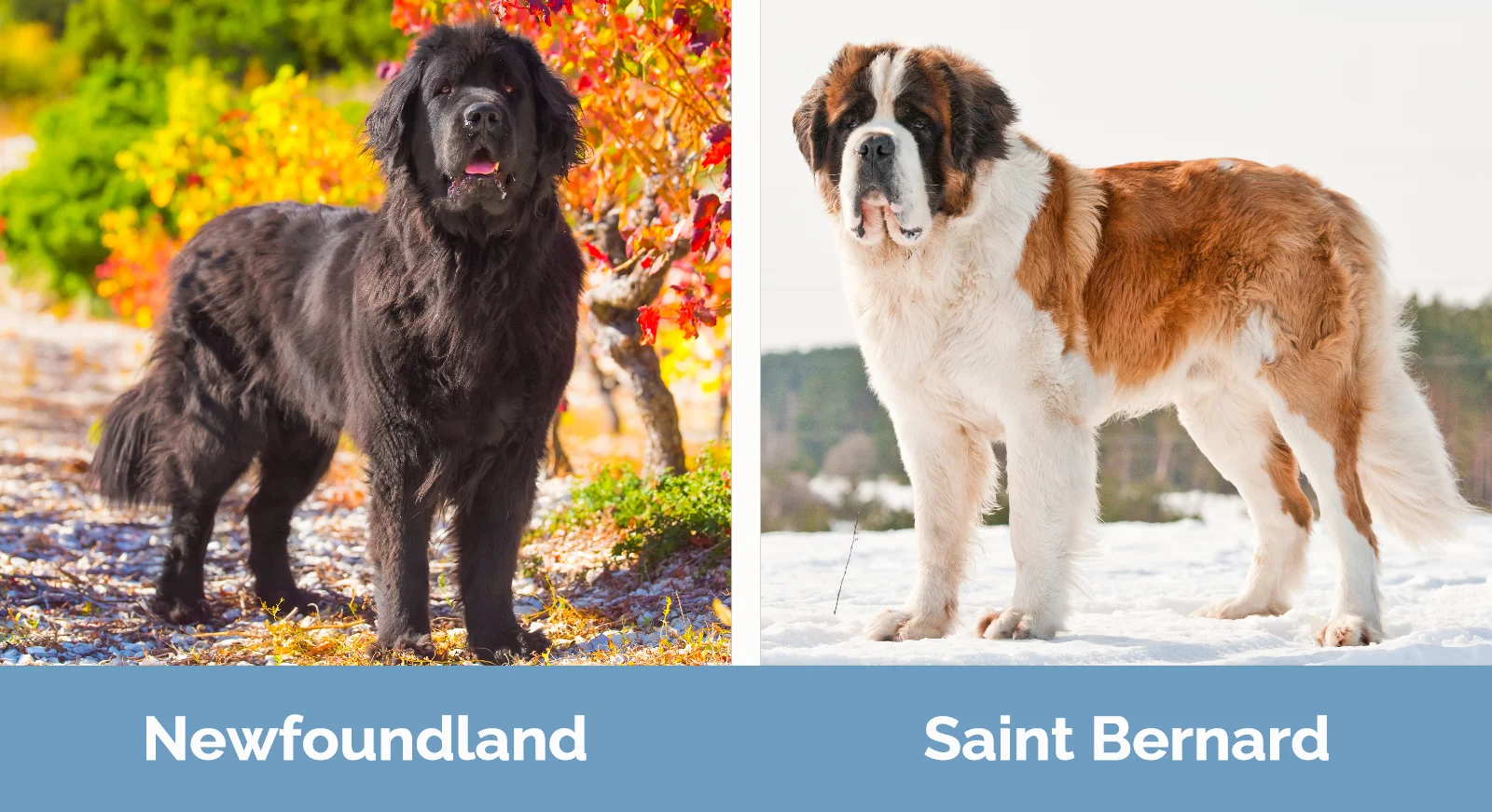
At a Glance
- Average height (adult): 25–29 inches
- Average weight (adult): 99–150 pounds
- Lifespan: 8–10 years
- Exercise: 1+ hours a day
- Grooming needs: Minimal
- Family-friendly: Yes
- Other pet-friendly: Often
- Trainability: Patient, Devoted, Sweet
- Average height (adult): 26– 30 inches
- Average weight (adult): 120– 180 pounds
- Lifespan: 8–10 years
- Exercise: 2+ hours a day
- Grooming needs: Minimal
- Family-friendly: Yes
- Other pet-friendly: Often
- Trainability: Playful, Delightful, Curious
Newfoundland Pet Breed Overview
Appearance
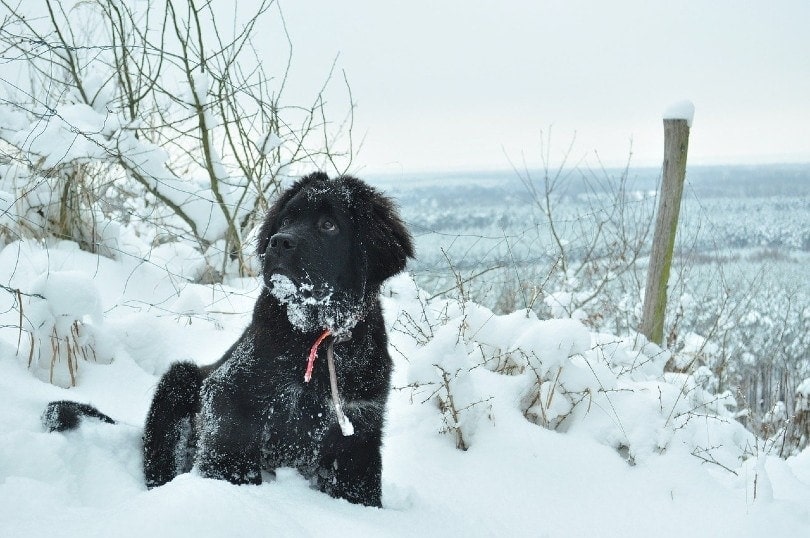
Newfoundlands can weigh up to 150 pounds and reach 28 inches tall, and the males are considerably larger and taller than the females. Their head is enormous, but their expression is soft and “lazy.” They have a double coat, which protects them from the elements. Their outer coat is flat and coarse, but their inner coat is soft. When they shed, they lose their inner coat.
Their colors range from gray to brown to black. Their most well-known coat pattern is black and white. It was popularized by Sir Edwin Landseer, who painted them in the color pattern. Therefore, the color is also called the Landseer, after the painter.
Grooming
Newfoundlands require brushing at least once a week. They do not shed often but blow their coat seasonally when they need more brushing than average. They need thorough grooming with a slicker brush and a long-toothed comb. This will prevent mats from forming and also help keep them clean. If you keep your dog brushed, you will not need to bathe them very often.
Spayed and neutered Newfoundlands shed more often and must be brushed out at least a few times a week. As with all breeds, their nails should be trimmed regularly.
Exercise
The Newfoundland is multi-purposed and was developed to work on land and in the water. However, they aren’t very energetic. The average Newfoundland only needs an hour or so of exercise a day. Still, they will take part in outdoor activities if given a chance.
Most of them like long walks, hikes, and swimming. They can participate in drafting and carting competitions and also love agility, dock jumping, flyball, herding, obedience, and tracking.
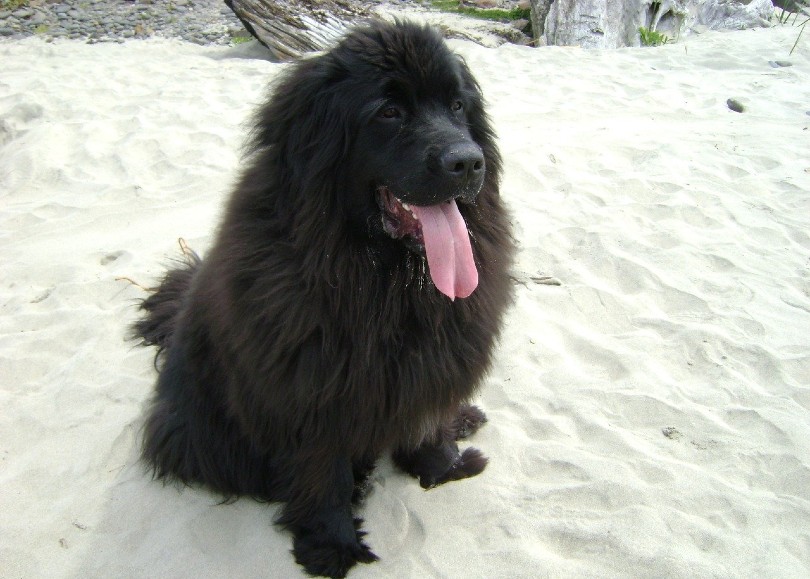
Training
Luckily, Newfoundlands are straightforward to train. They like working with people, which makes them easier to handle during training sessions. Early socialization and training are necessary so they are well-behaved as adults.
They should be introduced to the water in 4 months if you want to teach them to swim. They are very trusting and do well with gentle guidance. They don’t do good with punishment or harsh training, however.
Saint Bernard Pet Breed Overview
Appearance
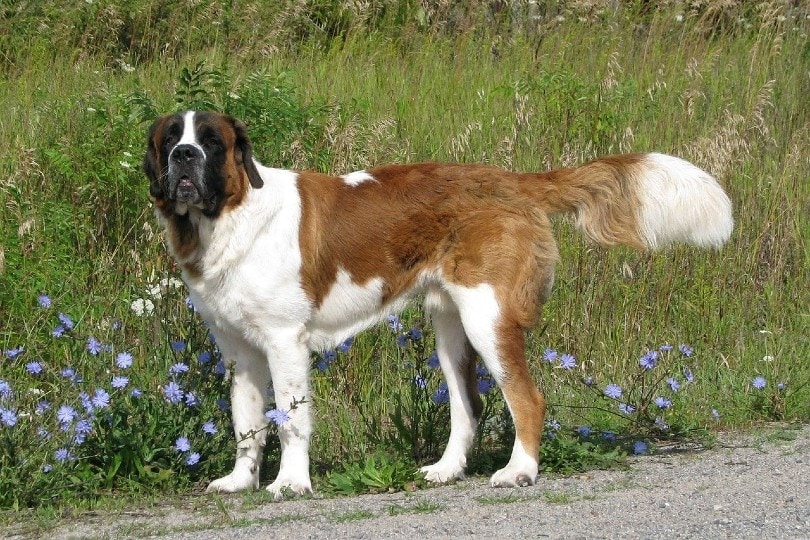
Saint Bernards are a powerful and imposing breed. The male stands at 27.5 inches at the shoulder. Females are smaller, though they are still reasonably powerful. Males can weigh 180 pounds, and females usually weigh 40 pounds less.
They have relatively large heads and a short muzzle. Their brow is wrinkled, and they usually have darker eyes. Saint Bernards are incredibly intelligent and have an amiable nature.
Grooming
Saint Bernards come in two varieties: long-haired and short-haired. Each variant needs a different amount of grooming, but daily brushing can prevent the build-up of loose hair in your home and keep your dog’s coat healthy. If you groom your St. Bernard regularly, you won’t have to worry about bathing them as often. Tangles can be removed with a slicker brush or metal comb.
Long-haired varieties are more prone to matting than short-haired dogs. However, as long as you brush out all the tangles at least once a week, you usually don’t have to worry about mats. Saint Bernards shed more about twice yearly when they “blow their coats.”
You will likely need to increase the brushing frequency during these periods. You must trim their nails to prevent overgrown nails, which can cause walking problems and become quite painful.
Exercise
Saint Bernards need quite a bit of exercise despite their larger size. They are characterized as lazy, but that doesn’t fit their personality very well. They do best with at least one or two hours of daily exercise. Longer hikes and backpacking are recommended since they love joining their owners on outdoor adventures.
These dogs can even pull children in carts and often enjoy carting and drafting. They are happy to perform activities with their owners. Take them to whatever physical activity you enjoy doing.

Training
Saint Bernards are attentive to their owners and are relatively easy to train. Early socialization and puppy training classes are highly recommended since training them before they become enormous adults is best. Obedience training will help them learn not to knock people over or steal food from the table.
They’re generally kind-hearted and eager to work with their people. They respond to commands when they understand what you’re asking them to do. Saint Bernards love their family, so they may occasionally act out if they don’t get enough attention.
Newfoundland vs. Saint Bernard: Activity Level
The Newfoundland has a significantly lower activity level than the Saint Bernard. If you don’t walk your Newfoundland one day, they probably aren’t going to tear up your house. They are low-energy dogs, though they can step up and go on hikes and longer walks if you ask.
On the other hand, Saint Bernards are much more energetic. They need a long daily walk and can thrive on hikes and other higher-energy activities. If you don’t exercise a Saint Bernard, they can get rambunctious and will get into trouble. Leaving the dog in your house all day is not possible. They will get into trouble and mess up your home.
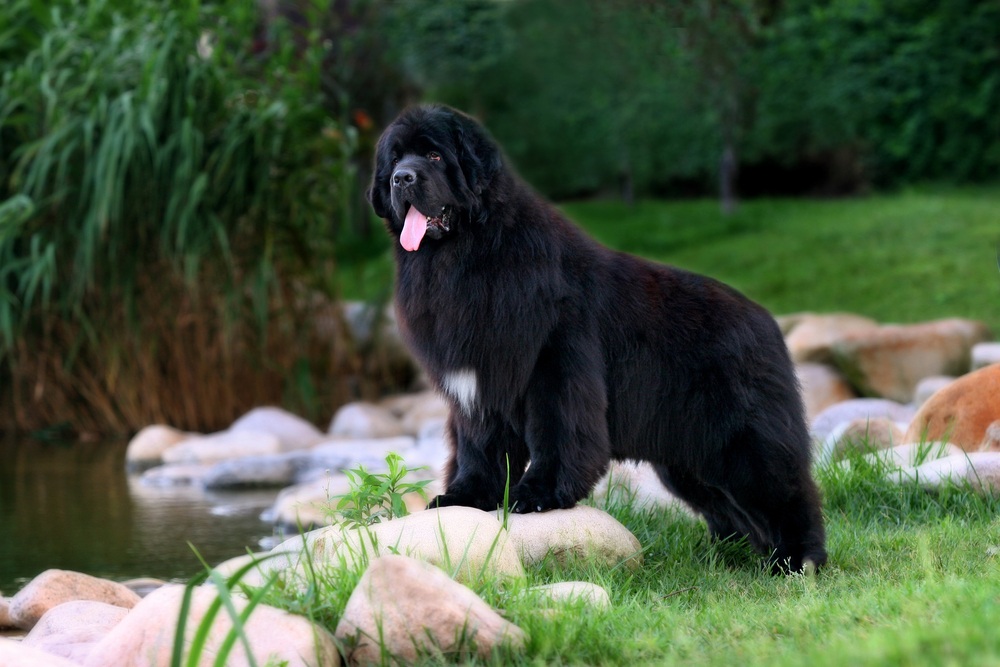
Training
The Newfoundland is one of the most comfortable dogs to train. These dogs are considerably easy to train, and they typically listen when given a command. Early training is still recommended since these dogs still get large when they are full-grown. They need to be under control before they get large.
Newfoundlands tend to get along just fine with other dogs. Early socialization is recommended, but they usually don’t need too much training to be around other dogs.
St. Bernards are a bit more energetic and aloof. They tend to get distracted more efficiently, which can make them harder to train. Early training classes are highly recommended, as they will jump up on people unless taught otherwise. When they get larger, this can be a significant problem.
Both of these dogs can be great pets, but you should plan on spending more time training your St. Bernard than you would a Newfoundland.
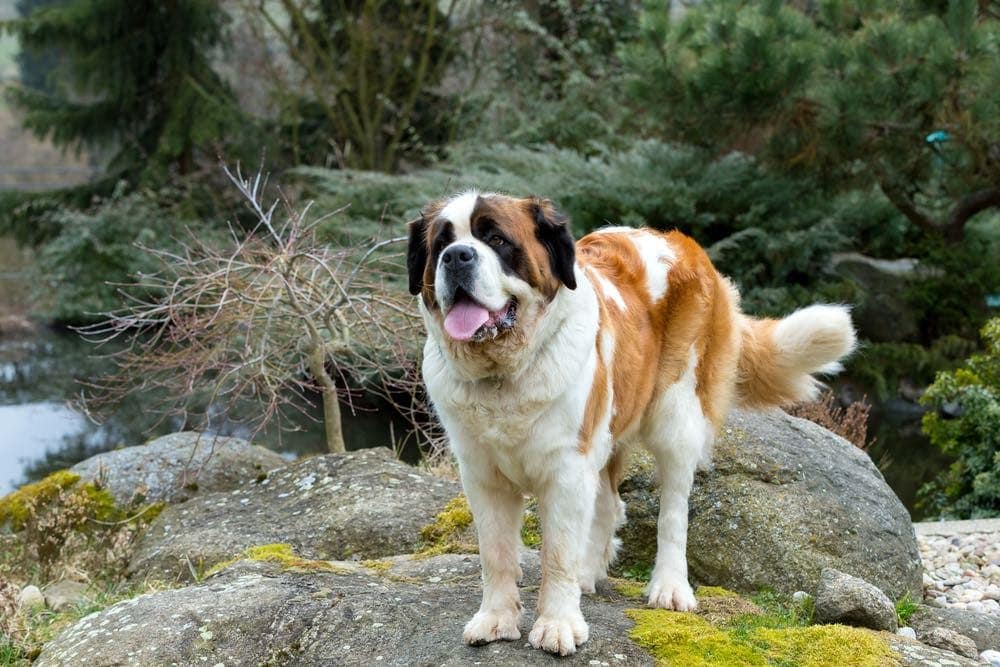
Health
Both dogs have similar health problems. They’re prone to structural problems since they are so large and can develop hip and elbow dysplasia. They often have more problems in their elderly years, when their joints start showing the wear and tear of age.
They need high-quality food to support their health. Be sure you get a brand designed for giant breed dogs since they need different nutrients than smaller dog breeds. Both breeds can also suffer from bloat. No one knows exactly what causes bloat, but it seems to do with exercising after a large meal.
Saint Bernards may be more prone to degenerative myelopathy, leading to decreased coordination, but here is a genetic test for it. Newfoundlands should get a Cystinuria DNA test, a disease that can cause kidney and bladder stones.
Which Breed is Right for You?
If you’re looking for a big dog, you can’t get much bigger than a Newfoundland or St. Bernard. Both of these dogs are pretty similar to each other. The main difference when considering the Newfoundland and the Saint Bernard is that the Saint Bernard is a bit more energetic, while Newfoundland is easier to train.
At the end, which breed you choose is really up to you!
See Also:
Featured Image Credit: (L) Pandas, Shutterstock | (R) Siddharth shah, Unsplash





